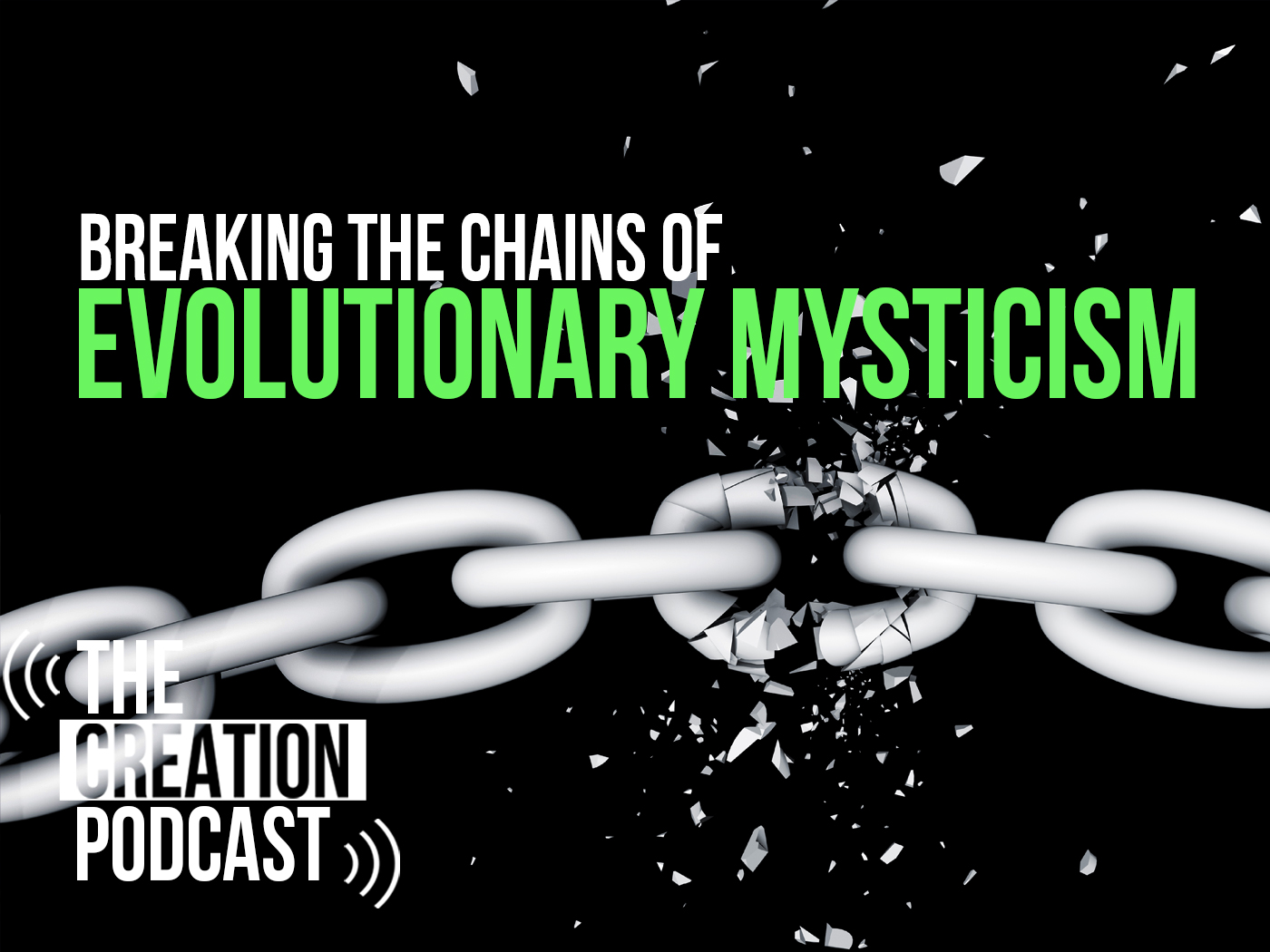In 1976, the journal Science published a paper titled "Variations in the Earth's Orbit: Pacemaker of the Ice Ages."1 This paper seemed to confirm a particular explanation for the dozens of ice ages which secular scientists claim to have occurred within the past 2.6 million years.2 Known as the Milankovitch (or astronomical) theory, this model is currently the dominant secular explanation for these supposed ice ages. For this reason, this paper is an icon in the field of paleoclimatology, the study of ancient climates. Furthermore, because the Milankovitch theory assumes millions of years, this paper has also become an iconic argument for an old Earth. But recent ICR research has yielded convincing evidence that the results of this paper have been largely invalid—even by secular scientists' own reckoning—for the last 25 years.3,4,5 Moreover, most climate and paleoclimate scientists seem to be completely unaware of this fact.
There is strong geological evidence for a single Ice Age in the recent past, which creation scientists have convincingly attributed to the aftermath of the Genesis Flood.6 However, uniformitarian scientists, who deny special creation and the Flood, generally hold to the Milankovitch theory, which claims that the earth has experienced slow, gradual changes in its orbital and rotational motions over millions of years. If one extrapolates these earth motions backward into the supposed prehistoric past, semi-periodic cycles having lengths of about 100, 41, and 23 thousand years are evident. The variations in the seasonal and latitudinal distribution of sunlight resulting from these orbital and rotational changes are thought to pace the ice ages. And this pacing aspect of the model influenced the nickname of the paper: the Pacemaker paper.
Although there are many problems with the Milankovitch theory, it is widely accepted today largely as a result of the Pacemaker paper.7,8 The paper's authors analyzed variations in three quantities, thought to have climate-related significance, which were measured in two deep-sea Indian Ocean sediment cores. Their analysis showed evidence of climatic cycles having lengths of about 100, 41, and 23 thousand years. Because the lengths of the climate cycles agreed with Milankovitch expectations, the Pacemaker paper was seen as providing strong evidence for the Milankovitch ice age theory.
However, before they could perform their analysis the Pacemaker authors had to assign ages to the seafloor sediments within the two cores. Critical to assigning those ages was the most recent reversal or "flip" in the earth's magnetic field, designated as the Brunhes-Matuyama (B-M) magnetic reversal. At the time, uniformitarians assigned an age of 700 thousand years to the B-M magnetic reversal and then used that age to help obtain the timescales they assigned to the two Indian Ocean cores.9 However, in the early 1990s, uniformitarians revised the age of this magnetic reversal boundary to 780 thousand years.10,11 Ironically, uniformitarians proposed this age revision because they were trying to reconcile data within other sediment cores with Milankovitch expectations.
Incredibly, it seems no one ever bothered to see what effect this 80,000-year age revision would have on the original Pacemaker results. Therefore, nearly 40 years after the paper's publication, I set about to do just that. First, I had to wholly reconstruct the data from the figures in the Pacemaker paper, as I was unable to obtain the original 10-cm resolution data used by the papers' authors.3 Then, as a test of my understanding of the method which they used, I replicated the original results from the Pacemaker paper. Even though I was using a reconstructed data set, there was generally good agreement between my results and those from the Pacemaker paper.4,5 Finally, I re-worked the calculations after taking into account the revised age of the B-M reversal boundary. When I did so, the results no longer provided convincing evidence for the Milankovitch theory!5
Do uniformitarians have convincing arguments for the Milankovitch theory that could replace the results from the Pacemaker paper? I suspect the answer is no.5 If that is the case, then hundreds of published uniformitarian age assignments would be called into question—even by uniformitarian reckoning—since the Milankovitch theory is routinely used as a foundational model to date seafloor sediments and ice cores and even to calibrate the argon-argon radioisotope-dating method!12
Moreover, this result has implications for the global-warming/climate-change debate, as uniformitarian thinking and the Milankovitch theory are making a subtle but significant contribution to alarmism over this issue.5
Lord willing, we will discuss this research at length in upcoming issues of Acts & Facts.
References
- Hays, J. D., J. Imbrie, and N. J. Shackleton. 1976. Variations in the Earth's Orbit: Pacemaker of the Ice Ages. Science. 194 (4270): 1121-1132.
- Walker, M. and J. Lowe. 2007. Quaternary Science 2007: A 50-year Retrospective. Journal of the Geological Society. 164 (6): 1073-1092
- Hebert, J. 2016. Should the "Pacemaker of the Ice Ages" Paper Be Retracted? Part 1. Answers Research Journal. 9: 25-56.
- Hebert, J. 2016. Should the "Pacemaker of the Ice Ages" Paper Be Retracted? Part 2. Answers Research Journal. 9: 131-147.
- Hebert, J. 2016. Should the "Pacemaker of the Ice Ages" Paper Be Retracted? Part 3. Answers Research Journal. 9: 229-255.
- Oard, M. J. 1990. An Ice Age Caused by the Genesis Flood. El Cajon, California: Institute for Creation Research.
- Oard, M. J. 2007. Astronomical troubles for the astronomical hypothesis of Ice Ages. Journal of Creation. 21 (3): 19-23.
- Cronin, T. M. 2010. Paleoclimates: Understanding Climate Change Past and Present. New York: Columbia University Press: 130-139.
- Shackleton, N. J. and N. D. Opdyke. 1973. Oxygen Isotope and Palaeomagnetic Stratigraphy of Equatorial Pacific Core V28-238: Oxygen Isotope Temperatures and Ice Volumes on a 105 and 106 Year Scale. Quaternary Research. 3 (1): 39-55.
- Shackleton, N. J. et al. 1990. An Alternative Astronomical Calibration of the Lower Pleistocene Timescale Based on ODP Site 677. Transactions of the Royal Society of Edinburgh: Earth Sciences. 81 (4): 251-261.
- Hilgen, F. J. 1991. Astronomical Calibration of Gauss to Matuyama sapropels in the Mediterranean and implication for the Geomagnetic Polarity Time Scale. Earth and Planetary Science Letters. 104 (2-4): 226-244.
- Hebert, J. 2014. Circular Reasoning in the Dating of Deep Seafloor Sediments and Ice Cores: The Orbital Tuning Method. Answers Research Journal. 7: 297-309.
*Dr. Hebert is Research Associate at the Institute for Creation Research and earned his Ph.D. in physics from the University of Texas at Dallas.
Article posted on September 14, 2016.

























